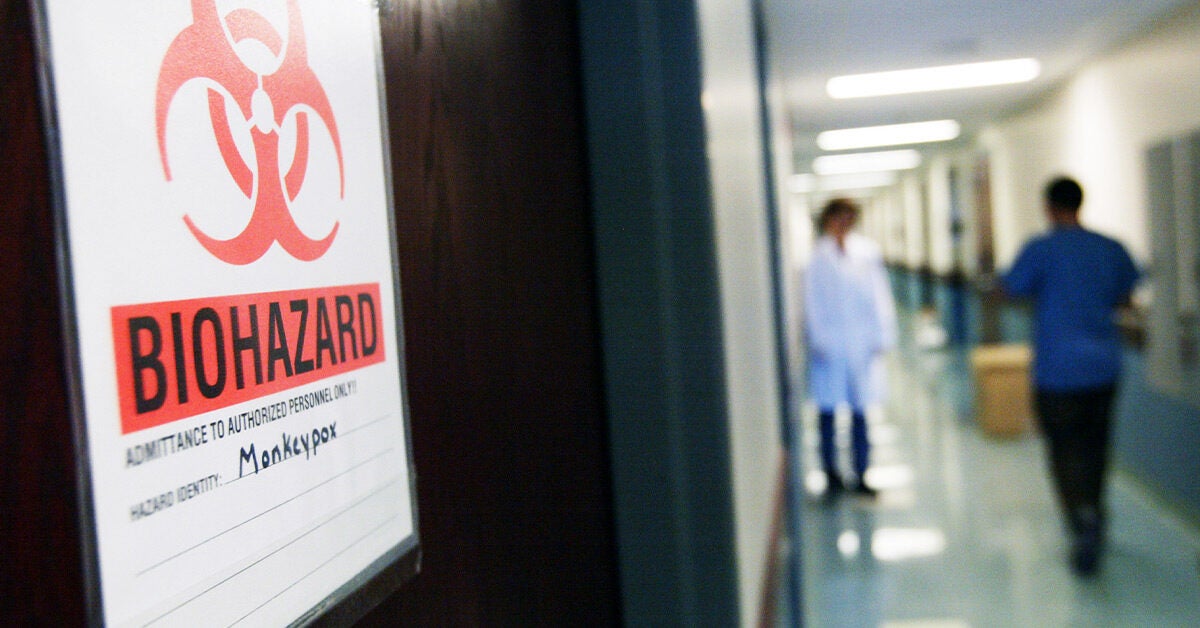Monkeypox Symptoms Usually Show Up in This Order - Healthline

- Initial symptoms of monkeypox include fever, body aches, and fatigue.
- The disease is similar to the smallpox virus but much less deadly.
- The disease can result in a rash that leads to red bumps on the skin.
A rare condition called monkeypox has been confirmed in the United States and Europe, with more suspected cases worldwide. Although there are only about 200 confirmed cases, health experts are starting to investigate the spread and what this means for the public.
Monkeypox is a virus that originated in animals in West and Central Africa. While usually confined to animals, as previous outbreaks have shown, it can also jump to humans.
"This is a virus that belongs to the same group as the smallpox virus; however, it's a much milder and less deadly form of it," says Dr. William Schaffner, an infectious disease expert at Vanderbilt University Medical Center in Tennessee.
The first confirmed case was on May 7th from a person who had traveled to the United Kingdom from Nigeria. Additional cases were noted in London but were unrelated to the first case suggesting unlinked chains of infection. So far to date, there have been no reports of death.
The initial symptoms of monkeypox are upper respiratory or flu-like. However, they do not show up for up to two weeks after someone is infected.
"If you are exposed and infected with the virus, it has a very long incubation period – and once it does enter the body, it affects internal organs first," Schaffner explained.
He continued, "These symptoms include a very prominent fever, body aches and pains, headache, and fatigue."
As the body fights these symptoms, lymphadenopathy, or enlarged lymph nodes, appears after the initial symptoms.
These symptoms then progress to a rash often found on the hands, feet, face, mouth, or even genitals. These rashes transform into raised bumps or painful puss-filled red papules.
Dr. Jeremey Walker, assistant professor at the University of Alabama at Birmingham Division of Infectious Diseases, explains that the "illness often lasts 2-4 weeks" and it usually necessitates avoiding close contact with others to limit and prevent spread.
If you are experiencing symptoms, Walker shares the Centers for Disease Control and Prevention (CDC) recommendations to contact your physician, especially if you "have recently traveled to Central or West Africa or areas within Europe where multiple cases have been reported."
Additionally, if you have "had contact with a person who has had suspected or known monkeypox or are a man who regularly has intimate contact with men."
Monkeypox is transmitted person-to-person through close contact.
"This virus transmits through respiratory droplets, which requires prolonged face-to-face or close contact with another individual – this is very different from COVID-19," Schaffner told Healthline.
"With this virus, we see chains of transmission which are linked to another individual. However, unlike COVID-19, which had the ability to transmit to others by both respiratory and airborne routes, we do not expect to see a large cases of transmission with monkeypox," he continued.
Health experts at the
While officials have said certain groups including men who have sex with men may be at increased risk, the disease can affect anyone who is exposed.
There are two forms of this virus, the West African and the Central African form.
"According to the WHO, all cases whose samples have been confirmed by PCR have been from the West African clade," says Dr. Jeremey Walker, Assistant Professor at the University of Alabama at Birmingham Division of Infectious Diseases.
"Infections with the West African clade tend to be less severe than Congo Basin, (Central African) clade, and there is a lower case fatality rate," Walker told Healthline.
These outbreaks are not new. The virus was first discovered in monkeys in
While most cases are usually within Africa, previous outbreaks have shown up in Israel, the United States, and Singapore. The most recent United States outbreak was in 2003, with 47 cases.
The CDC reports that there is currently no proven or safe treatment for monkeypox, and most people recover and survive without any intervention.
While the Food and Drug Administration has approved vaccines for monkeypox transmission, it has not been used for the general population in almost 50 years and currently remains within the Strategic National Stockpile.
"At the moment, there is no plan to use any vaccines in the United States for monkeypox as we only have a handful of cases, however, the CDC is making plans in the event that it has to be used in the future," said Schaffner.
While the symptoms of monkeypox are vague and seem to be like many of the more common upper respiratory infections, there are reasons to contact a physician.
Walker explains, "if you have a new unexplained rash, you should contact your physician for evaluation and treatment. Your physician could assess for any concerns for monkeypox, and additionally, coordinate appropriate workup and treatment for the many other causes of a rash as well."
Dr. Rajiv Bahl, is an emergency medicine physician, board member of the Florida College of Emergency Physicians, and health writer. You can find him at RajivBahlMD.com.

Comments
Post a Comment